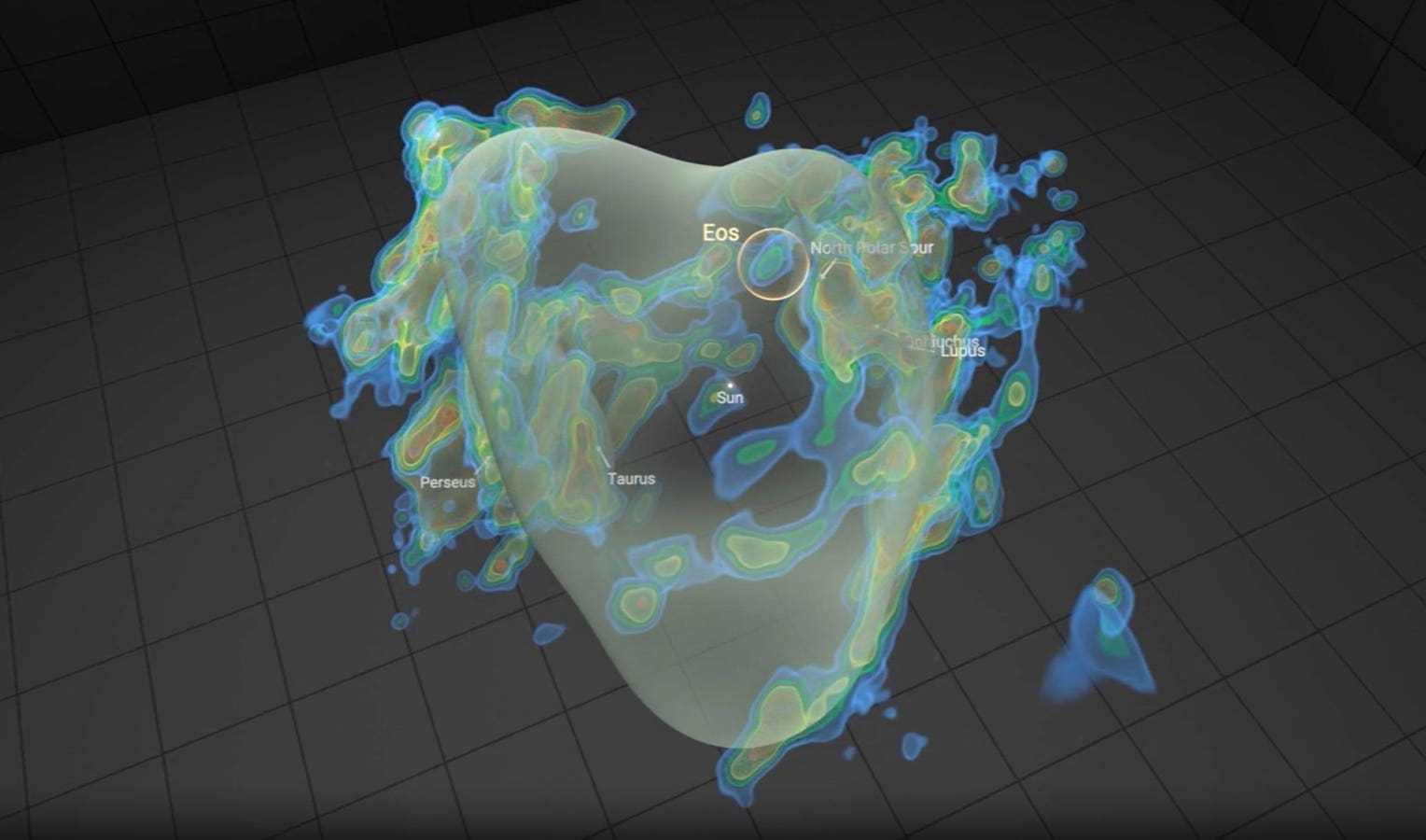Topline
Scientists have discovered a massive molecular cloud close to the solar system. As big as 40 full moons as seen from Earth, the vast structure — which poses no threat — is composed primarily of molecular hydrogen, the essential building block of stars and planets. Since Eos is so close to the solar system, the discovery could help scientists more closely study the early stages of how stars and planets form.
Scientists have discovered a potentially star-forming cloud that is one of the largest structures in … More the sky.
Key Facts
The vast cloud of hydrogen, which is shaped like a croissant, is one of the largest single structures in the sky and among the closest to the sun and Earth ever to be detected.
This one, named “Eos” by scientists, is 300 light-years from the solar system in the interstellar medium, the space between star systems that comprise gas and dust. It’s this material from which new stars, and eventually planets, form.
Molecular clouds are dense concentrations of gas and dust. Eos may be a star-forming cloud because it contains mainly molecular hydrogen, the most abundant molecule in the universe and crucial in forming stars and planets.
If we could see Eos with the naked eye, it would appear about as large as 40 full moons in the night sky, say the scientists who discovered it. They also calculated that it will evaporate in six million years.
Why ‘eos’ Took So Long To Find
Eos has been invisible until now because molecular hydrogen has been very difficult to detect. Most molecular clouds comprise mainly carbon monoxide, which infrared and radio telescopes can see. Scientists saw Eos glowing faintly in the far-ultraviolet spectrum in data collected by South Korea’s STSAT-1 satellite, launched in 2003. The discovery of Eos marks the first time a molecular cloud has been detected with light emitted in far-ultraviolet light.
“This opens up new possibilities for studying the molecular universe,” said Blakseley Burkhart, associate professor in the Department of Physics and Astronomy at the Rutgers School of Arts and Sciences, New Jersey, lead author of a study published today in Nature Astronomy. “The data showed glowing hydrogen molecules detected via fluorescence in the far ultraviolet. This cloud is literally glowing in the dark.”
Early Universe Detection
As well as the stunning discovery of a molecular hydrogen cloud so close to the solar system, a similar technique may have already successfully uncovered the most distant. Using the James Webb Space Telescope, Burkhart and others recently published a draft paper revealing tentative detections of molecular hydrogen in two galaxies in the very early universe. “Using JWST, we may have found the very furthest hydrogen molecules from the sun,” said Burkhart. “So, we have found both some of the closest and farthest using far-ultraviolet emission.”
Background
The solar system exists within a gas-filled cavity 1,000 light-years wide within the Orion Arm, a minor spiral arm of the Milky Way galaxy. Astronomers call that cavity the Local Bubble — and Eos sits on the edge of it. The Local Bubble is 1,000 light-years wide and exists because a star exploded as a supernova about 10-20 million years ago. That supernova may have helped produce the star-forming molecular clouds that our sun came from — and even life on Earth itself. The Local Bubble is full of young stars, all of which formed on the surface of the bubble of gas.
“The story of the cosmos is a story of the rearrangement of atoms over billions of years,” said Burkhart. “The hydrogen that is currently in the Eos cloud existed at the time of the Big Bang and eventually fell onto our galaxy and coalesced nearby the sun. So, it’s been a long journey of 13.6 billion years for these hydrogen atoms.”
Further Reading
ForbesSunday’s ‘New Supermoon’ Was 2025’s Closest — Expect King TidesBy Jamie Carter
ForbesHalley’s Comet Meteor Shower Starts This Weekend — Here’s When To WatchBy Jamie CarterForbesThe Greatest Eclipse Of Your Life Is Coming Soon — Here’s What To KnowBy Jamie Carter










